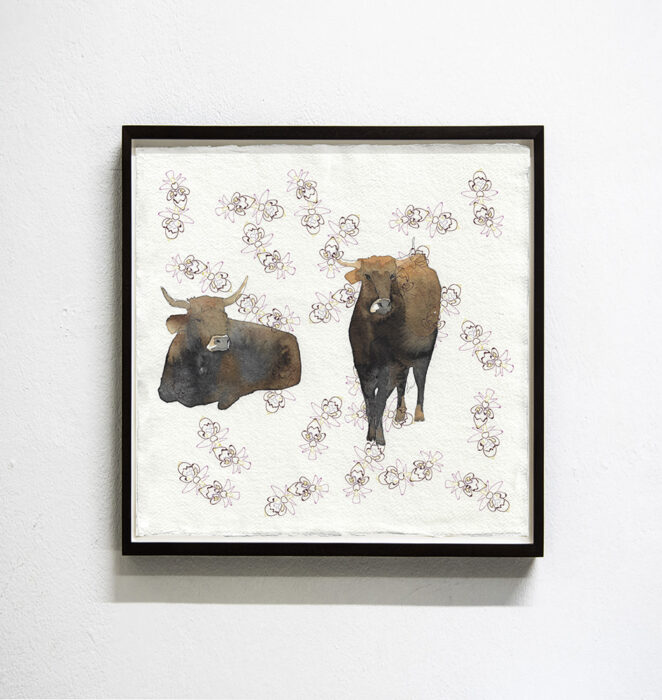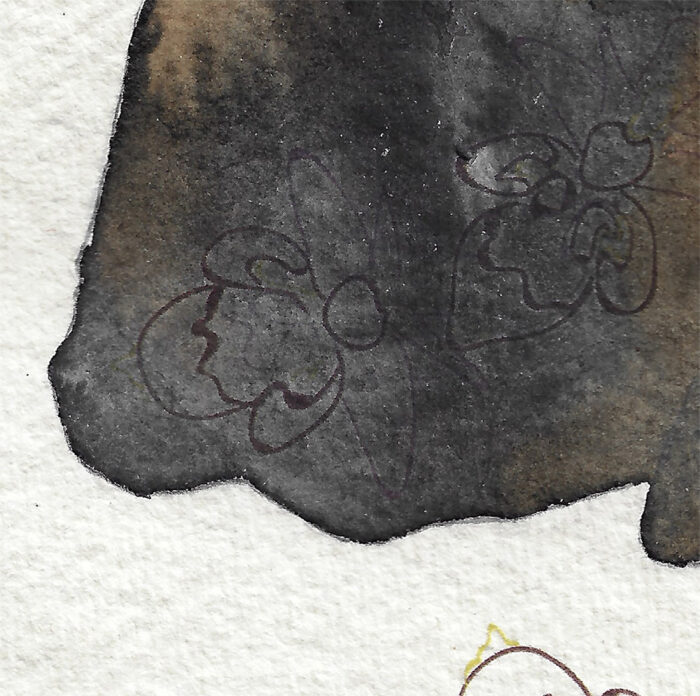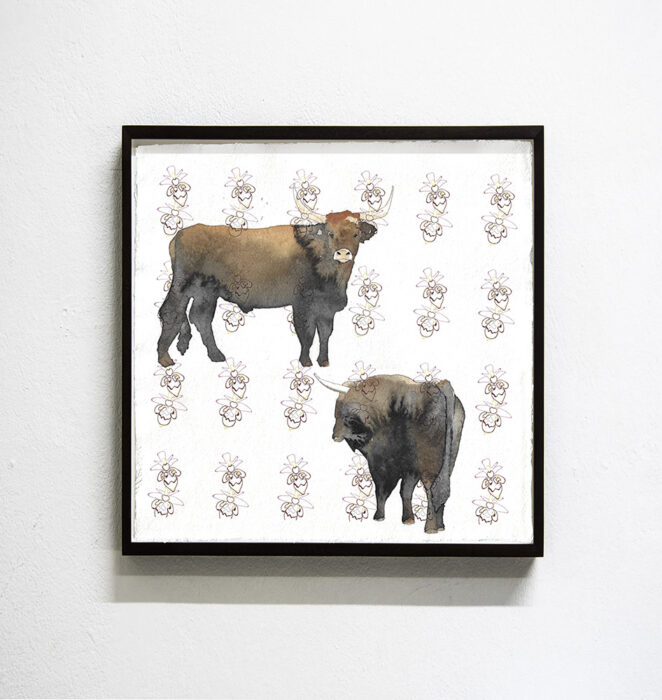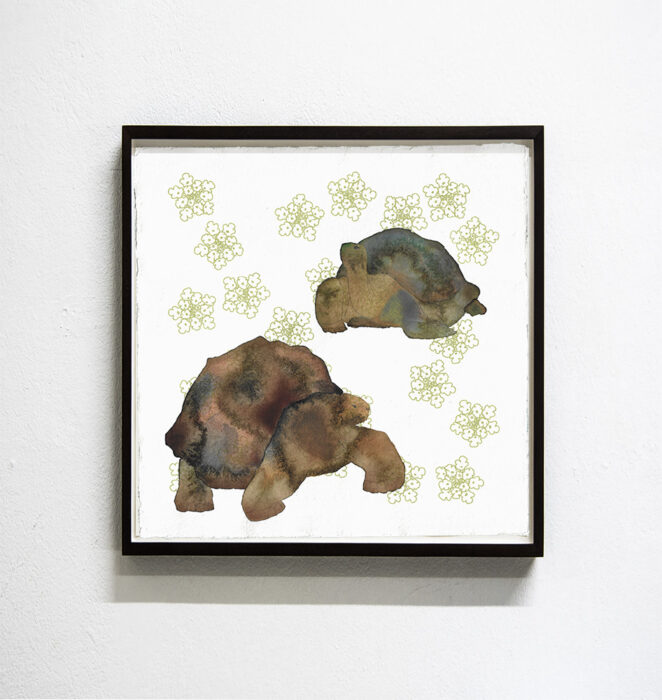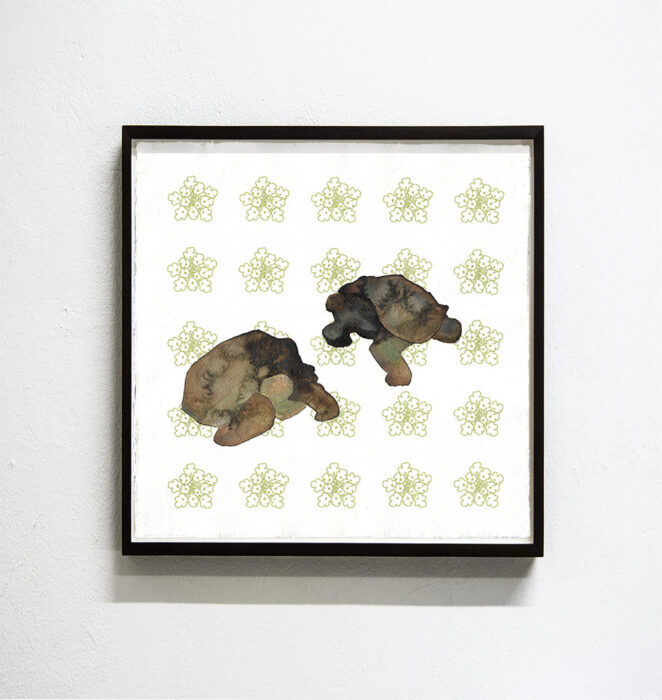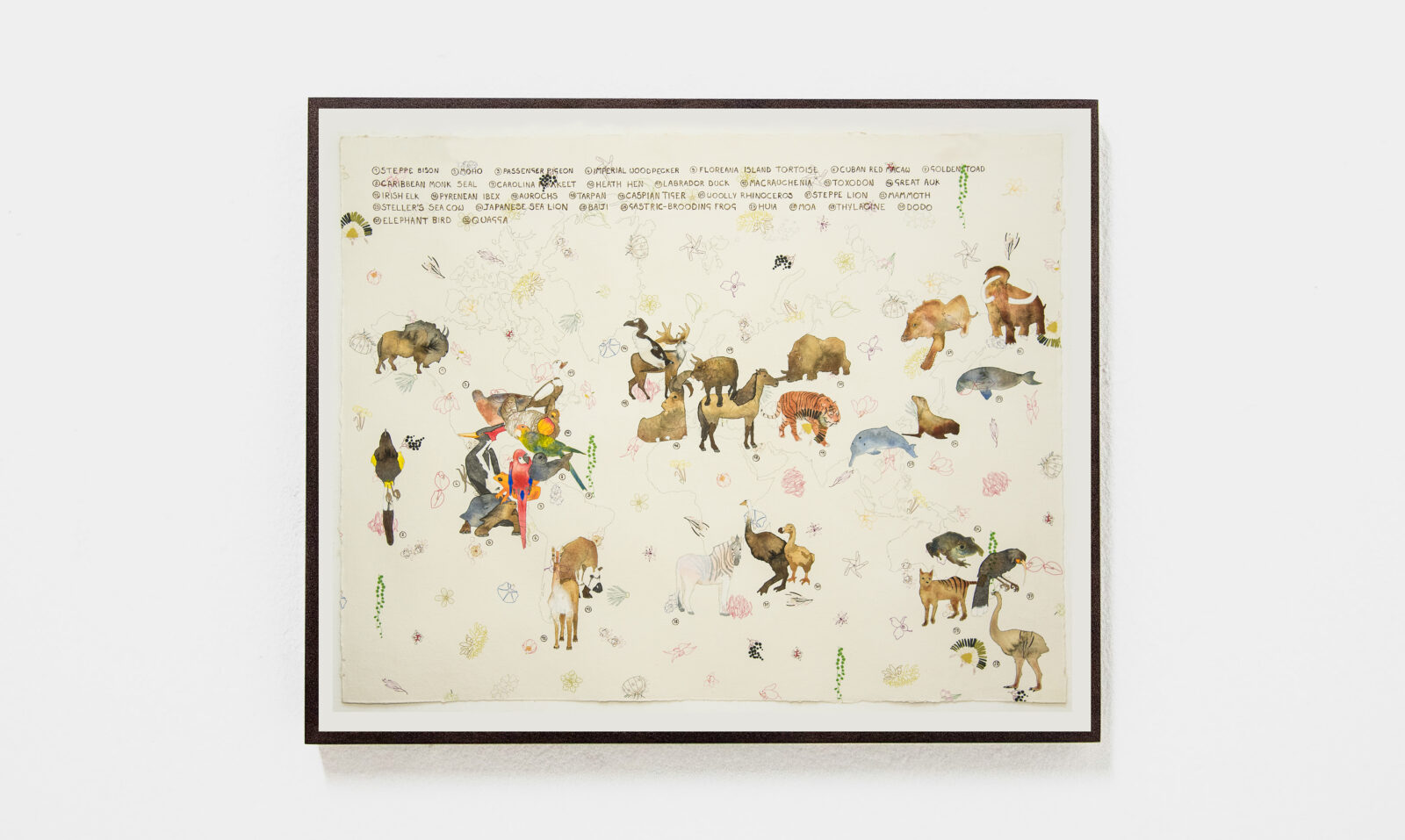
De-extinction, also called biological resurrection, consists of the process of artificially reviving an organism of an extinct species.
Over the course of a first attempt to reconstruct a lost paradise, some genetic engineering and environmental protection programs implement plans aimed at the resurrection of extinct animals in many parts of the world. Some of these animals even seem impossible to imagine, such as the mammoth. Yet we talk about it and it would be possible if we wanted it.
What choices does climate change drive us to make? The rapid disappearance of species currently being witnessed brings new urgency to the question of the responsibility of human beings with regard to other species. But who chooses which species are allowed to come back to life and which are not? And according to what criteria? Who is redesigning the world this time? And is this really the responsibility of human beings?
The series consists of 2 large atlases, 80 x 117 cm, and several small watercolors, 30 x 30 cm each. These are all on handmade paper printed with floral motifs that reflect the fauna of the geographical areas in which these animals extincted.
WORK:
De-extinction atlas #01, 2021, watercolor on printed handmade cotton paper, 80 x 117.5 cm
EXHIBITIONS:
Reclaiming realms, VBM Gallery, Berlin, 2022-2023
Press release: Valentina Benedetta Marinone
Luogo comune, curated by qwatz – art platform, Sutura, Turin, 2023
Press release: Benedetta Di Loreto
In 1921 Germany, the Hellabrunn zoo in Munich to be exact, Lutz and Heinz Heck, brothers from Berlin, who would become militant Nazis and zoological looters, decided to revive the aurochs, a large primitive bovine, the last known specimen of which died in Poland in the Jaktorów forest.
They are partially successful, using the technique of back breeding, an artificial selection in reverse, crossbreeding descendants of the aurochs until, after 12 years, they created the Heck cattle, still a very imperfect copy.
The dream of reviving the aurochs did not die with the Heck brothers. This is one of the goals of the Tauros program, founded in 2008 as a collaboration between the Dutch foundation Stichting Taurus and a number of universities, including the Wageningen University and Research Center. The primary goal of the program is to re-wild some European nature preserves with megafauna, trying in this way to recreate the natural dynamics of European ecosystems.
The Floreana turtle became extinct on its native island, from which it takes its name, about 150 years ago. This was due to exploitation by whalers and sailors who fed on it as well as to hunting by the first settlers in the 18th and 19th centuries.
On an expedition to Wolf Vulcan in 2015, scientists found 19 turtles with partial ancestry of Floreana turtles, whose ancestors were abandoned by sailors to lighten the load for the trip home or to make more room for oil.
The found turtles were transported to the Galapagos National Park in Santa Cruz to start a breeding program in order to “resurrect” the extinct Floreana turtle (Chelonoidis niger), creating through back breeding a partial genetic ancestry with this species.
In March of this year, a total of 67 turtles hatched.
The young turtles will be released at the age of five to six years on Floreana Island as part of this long-term program to repopulate the island with giant turtles.
